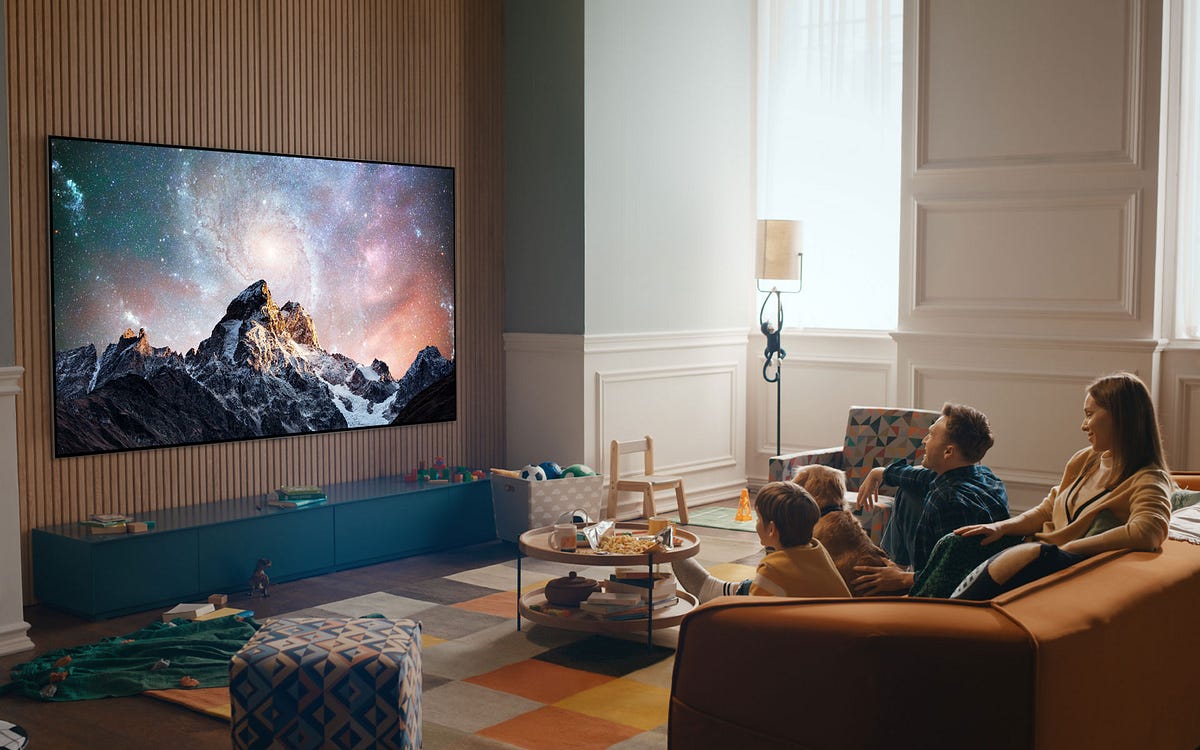CES 2022: LG Fails to Excite with Its New TVs
The Koreans stay on the same predictable path, may find it hard to compete during a World Cup year
KOSTAS FARKONAS
PublishED: January 9, 2022

It used to be that everyone was eager to learn about LG’s latest and greatest TV sets at the beginning of each year, during CES — but this has not been the case since 2018 and, truth be told, it’s saddening to see that 2022 did not break that streak of predictable product showings. This is no coincidence: just as OLED technology itself has not been able to meaningfully advance during the last three years, so the manufacturer that provides the vast majority of OLED panels to the global market has struggled to innovate. No wonder, then, that the Koreans — as it was already leaked about six weeks ago — chose to play it safe for another year, offering 2022 TV models not much different to the ones released in 2021 (or even 2020 in some respects).
So: as it was already widely anticipated, the A1, B1, C1, G1 and Z1 lines of 2021 LG OLED TVs are succeeded by the A2, B2, C2, G2 and Z2 lines (the last being the only one of 8K resolution among those). Differences? Not many: the C2 will feature the OLED “Evo” tech (exclusive to the G1 last year) and it will come in two new sizes of 42 and 83 inches. The G2 will get the “Evo” tech along with a “brightness booster” (most probably a heatsink), as well as an 83- and a 97-inch version (LG’s largest TV yet but possibly not a good fit for the 4K resolution it will be sporting). It’s still unclear whether the C2 and G2 will feature LG Display’s new OLED EX panels from the start or not, since that company specifically stated that they would be used in the second half of 2022. This will probably be clarified by March or April.
The A1 and B1 have “conventional” (i.e. of lower brightness) OLED panels, the former only supporting 4K/60Hz content just like last year. Being the entry-level models in LG’s OLED TV lineup, they are built around the weaker Alpha 7 Gen 5 processor, while all other models sport the new Alpha 9 Gen 5. But even the latter does not seem to offer all that much that is actually noteworthy this year, apart from minor, expected improvements in picture and sound processing. On an interesting note, after trying to convince everyone for two years that it does not matter whether the HDMI 2.1 ports of a TV offer 40 or 48 Gbps of bandwidth, LG is now keen on letting us know that its new models are back to 48 Gbps. Right.
Software stagnation, MiniLED v2.0, not much else
On the software side, things are even more disappointing. The new WebOS makes a jump from version 6 to… version 22 (to be in line with the year it’s released), but the only new feature it has to show for it is multiple user profile support. There’s talk about an interesting function that makes it possible to “send” video content from one new LG TV in one room to another in a different room, but it will be added at some point in the future. Other than that, it seems as if LG is not all that interested in adding new functionality to its TVs through software, in stark contrast to what Samsung did this year.

Apart from the OLED TVs it will be offering, LG has also expanded its lineup of 4K/8K QNED TVs (i.e. its LED/LCDs with MiniLED backlighting) for 2022. The QNED 99 series will feature 8K resolution and “up to 2500” controllable dimming zones, while the more affordable QNED 95 does offer 8K resolution but on a 60Hz panel (it can still do 4K/120Hz). The QNED 90 and QNED 85 series are of 4K resolution and the number of controllable dimming zones varies depending on the screen size. Confusingly, there’s also a QNED 80 series, which does not feature MiniLED backlighting at all. Weird.
Since its 2021 v1.0 QNED implementation was widely criticized for its inaccurate control — which resulted in problems such as blooming or low contrast — LG claims that this year’s LED/LCD TVs dimming algorithm, dubbed Precision Dimming Pro/Pro Plus, helps “deliver rich, accurate colors and amazing contrast”. Dimming zone control of LCD backlighting has never been one of LG’s strengths, admittedly, so it will be interesting to see just how much progress the Koreans were able to make in that important area of image processing during the last 12 months or so.
So where does LG go from here?
With LG clearly not doing enough to offer more than iterative versions of its 2021 TV sets, everyone’s interest is now focused on the company’s pricing strategy. It’s only fair that consumers would expect lower prices, these being more or less the same products as before while economies of scale and maturity of processes allow LG to produce them at lower costs. It’s highly doubtful that the Koreans will acknowledge this, of course, but something’s got to give here. It’s highly likely that shortly after the launch of these TVs — once the first round of reviews is complete or a couple of months after that — discounts will start happening across the board. With 2022 being a football year and everything (the World Cup kicks off in November), chances are that consumers will not have to wait for Black Friday to get a heavily discounted LG TV this time around.

There’s also the added pressure of recent market developments LG will be facing in 2022. Samsung and Sony are both introducing TV sets based on QD-OLED technology, which competes directly with OLED while claiming to be better in color volume and overall brightness. These sets will only come in 55 and 65 inches from both manufacturers — and they are not expected to be cheap by any means — but if they truly feature significantly higher picture quality than LG’s G1 flagship 4K models, then suddenly the latter will give the impression of offering poor value by comparison.
In any case, LG’s weak CES 2022 showing in the TV sector is a discouraging one for the future. There’s no doubt that many of its new TVs will actually be really, really good. Great even. Priced competitively (in other words: discounted) a number of those models will probably do well. But it’s hard to shake the feeling that OLED as a display technology does not offer enough room for improvement anymore, while LG is not able to compete with Samsung or Sony on the LED/LCD front. Here’s hope that the company has been buying time, of sorts, during the last 3 years and that there’s something actually new, something more coming from LG in CES 2023. Cross fingers?



















